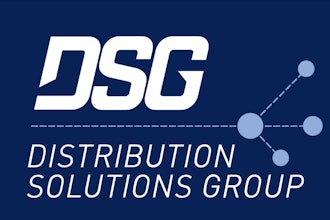
Distributors are creative when it comes to driving profitable growth. Small changes to processes, minor tweaks to inventory decisions, and the use of data to take emotions out of decisions go a long way in boosting their bottom line.
At ActVantage, we were fortunate to join several distributors on their growth journeys in the past 16 months, each of which was supported by exceptional and effective process improvements. Unfortunately, such improvement stories are often left untold because they aren’t documented and shared.
In this article, we share eight process-improvement stories from distributors during the pandemic. Use these as inspiration for your planning, each with a clear action item that led to results.
Action Item #1: Pay attention to single customer items.
Most distributors stock items that are sold only to a single customer. A fluid power distributor identified all the single customer items (about 710 items). The head of purchasing created three action categories:
Order as needed and move the item to non-stock.
Increase margins and communicate the message to customers: We stock it specifically for you.
Switch customers to alternate products to minimize the risk of holding a product for a single customer.
By putting these into practice, the distributor’s margins increased by $500K, safety stock dropped by 15%, and turns improved by 5% over seven months.
Action Item #2: Spread the green.
Customer penetration is one of the top growth strategies employed by distributors. An automation distributor stocked 11 different product categories. For their team of 22 salespeople, if their customers accessed four or fewer categories, the goal was to sell more categories to existing customers. The distributor called this approach “spread the green.” The distributor provided a simple one-page report to the sales teams to grow revenue with existing customers. In six months, the sales team exceeded their year-to-date quota by 20%.
Action Item #3: Close margin gap.
Identify customers with annual sales below $12,000 and benchmark their gross margin percentage with the top 50 customers. For example, an industrial distributor had a company gross margin of 21%. There were 812 customers that provided annual sales of less than $12,000; 523 customers had a margin between 13% and 16%. The goal of the inside sales team was to improve the margin of these 523 by 1% to 3%. The distributor successfully added $1 million in margin in six months.
Action Item #4: Take emotions out of inventory and customer decisions.
Set the right forecast method in your ERP so the data, rather than emotions, can inform decisions. An automotive distributor set rules based on item usage to leverage the right forecast method in their system. They used three levels:
Rapid: ≤ 3 months with zero usage
Medium: > 3 and ≤ 6 months with zero usage
Slow: 6 months with zero usage
The distributor then adjusted forecasting methods in its ERP system based on the three levels. The planner would monitor slow-moving items based on their inventory rank. The distributor assigned medium items to moving-average forecasting methods, or the average of the past four months of usage/demand. For the medium-level items, moving average methods typically perform well. The distributor would run rapid items through the ERP’s best-fit selection method.
These rules allowed the company to set appropriate forecast methods based on usage levels. Doing so helped the planners/buyers focus more on the fast-moving items to improve service levels. As a result, they improved service levels for their key items by 5% (from 90% to 95%) in four months.
Action Item #5: Adjust compensation to diversify risk.
Distributors can often make process improvements by adjusting compensation to encourage sales of slower-moving product lines. A metering equipment distributor had seven different product lines. The management team wanted to grow all lines uniformly. The normal tendency for the sales team was to move the more profitable and fast-moving product lines.
As a result, the end-of-the-year growth was not evenly spread across product lines. The team believed they could not meet their goal unless they linked the firm’s compensation plan to the objective. The management team decided to tie 15% of compensation to balancing out growth in the slower-moving product lines. As a result of this modified plan, product lines grew by more than 10% overall. In addition, the company earned higher rebates in two slower-moving product lines that it sourced from key suppliers.
Action Item #6: Bring recency of purchase to the forefront.
A building products distributor decided to eliminate some slow-moving products (C items) from its inventory. When management informed the sales force, they were shocked and said top customers were still buying the items — some very recently. The head of purchasing looked at the transaction data in the system and discovered that the last time any customer purchased the items was a year earlier. Providing transparency by adding a “date-of-last-purchase” helped ease the conversation between purchasing and the salesforce. With buy-in from the sales force, C inventory reduced by more than 18% in six months.
Action Item #7: Look for best practices in your company.
An electrical distributor developed a sales force segmentation model to identify its top salespeople. Management then created a focus group followed by an educational program based on the top salespeople’s best practices. This program was delivered to the salesforce every six months across each of the company’s sales regions. By identifying the best practices within the company, each of the business regions experienced a 1% to 2.4% increase in gross margins.
Action Item #8: Measure supplier performance – suppliers respond.
A foodservice and products distributor evaluated the performance of their top 50 suppliers for their main product lines. They tracked lead time and deviation from the agreed-upon lead time. Due to the suppliers’ inconsistent lead-time performance, the distributor had to carry additional safety stock. Many of the distributor’s employees did not believe suppliers would respond to a measurement system.
 Pradip Krishnadevarajan
Pradip Krishnadevarajan
Pradip Krishnadevarajan is co-founder of ActVantage, which helps distributors drive profitable growth through analytics. He has more than 15 years of experience helping hundreds of distributors while co-authoring seven books for the National Association of Wholesaler-Distributors. Before joining ActVantage, he co-founded the wholesale distribution-focused research lab at Texas A&M University's Industrial Distribution Program. Contact Pradip at [email protected] or visit actvantage.com.






















